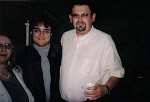
Today I decided to visit the Springfield Museum of Art for the first time. The vast majority of the works on display in this museum are the products of artists with a local connection. For a number of years Springfield was the national leader in the production of agricultural implements. Among the numerous manufacturers of agricultural equipment based in Springfield were Champion Reaper and a company that was one of the forerunners of International Harvester. The second largest industrial complex under one roof in the world was located on East Street. The mower was invented here by William Whiteley in 1851. In 1880 the William N. Whiteley Company produced more farm implements than all the factories in Chicago combined!
During this time period there was a great deal of prosperity in Springfield and this enticed a number of very talented artists to set up shop here.
The museum has on display several excellent Hudson River School paintings. Being the nature lover that I am, this was the part of the exhibit that I enjoyed the most. I also enjoyed several landscape paintings of scenes along Buck Creek painted in the nineteenth century by the Frankenstein brothers, Gustavus and Frank. They stand out for their exceptional clarity of detail and brightness of color. As a side note, I learned that Sherwood Anderson was a student at Wittenberg and while enrolled there lived with his brother Frank, a local artist, in a house known as “The Oaks” that once stood on South Wittenberg Street a few blocks from my home.
The museum is currently hosting a traveling exhibit of lithographs and etchings that were produced by artists who were participants in the Associated American Artists project. This was an intriguing endeavor launched in the depth of the Great Depression (1934) with the goal of bridging the divide between artists and the mass audience by making available signed works by highly acclaimed artists at affordable prices. The program initially met with a great deal of skepticism. Upon being approached for support one prominent businessman retorted “the people want food and you’re offering them art!” In spite of this the program proved to be a huge success. Catalogues were printed so that potential customers could browse through the available artworks at home and fifty department stores nationwide agreed to display and sell signed etchings and lithographs. The program filled a cultural void by making high quality art available to a vast audience that had previously been unable to afford it while at the same time also serving the interests of artists who had grown weary of being forced to deal with a small class of wealthy patrons. Most of the works on display at the museum feature scenes of everyday life, with farm and rural life being the dominant theme. Among my personal favorites were several lithographs by Grant Wood dealing with Iowa farm life and one work in partular by the Mexican artist Miguel Covarrubias.
My favorite work in the museum was the lithograph shown at the beginning of this post, “Rhumba" (1946). This was my first exposure to Covarrubias' work. When I got home I jumped on the Internet and did some research on Covarrubias. He was a twentieth century Renaissance man. Covarrubias made signal contributions in the fields of art, modern dance, archaeology, theater, and anthropology. As an anthropologist in Bali he was instrumental in documenting a vanishing way of life, a way of life that was also the subject of much of his greatest art. He was also an expert in the history of Mexican art and culture. His intellectual pursuits fueled his artistic endeavors and vice versa. The home that he shared with his wife, an accomplished master of modern dance in her own right, just outside of Mexico City was just as much of a favorite stopping point for traveling artists and intellectuals as the home of Gertrude Stein had been in Paris.

No comments:
Post a Comment